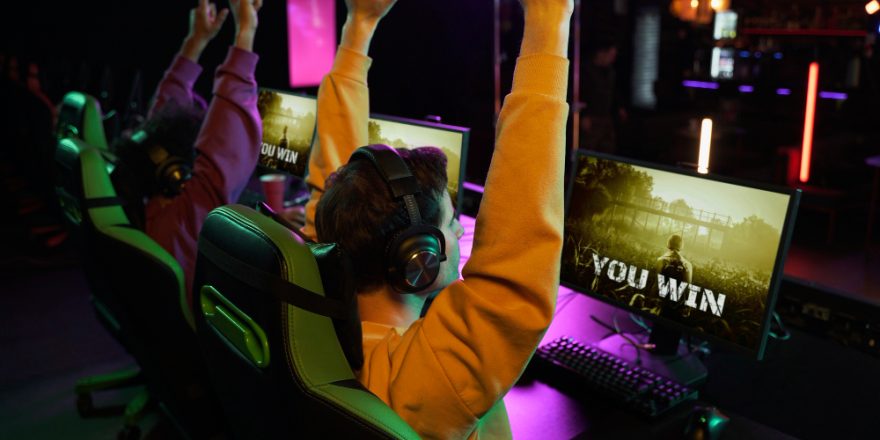In recent years, gamification has emerged as a powerful tool in education, transforming traditional learning experiences into interactive and engaging activities. This comprehensive guide explores the concept of gamification in education, its benefits, implementation strategies, and its role in enhancing student engagement, motivation, and learning outcomes.
Introduction to Gamification in Education
Gamification refers to the integration of game elements, mechanics, and principles into non-game contexts, such as education, to motivate participation, engagement, and learning. In the educational context, gamification leverages elements such as points, badges, leaderboards, levels, challenges, and rewards to create immersive and interactive learning experiences.
Benefits of Gamification in Education
Gamification offers numerous benefits for students, educators, and educational institutions alike. Some key benefits include:
- Increased Engagement and Motivation
- Intrinsic Motivation: Encourages students to take ownership of their learning and actively participate in educational activities.
- Active Learning: Promotes hands-on, experiential learning experiences that stimulate curiosity, creativity, and problem-solving skills.
- Enhanced Learning Outcomes
- Retention and Recall: Reinforces learning concepts through repetition, practice, and retrieval exercises, leading to improved retention and recall.
- Skill Development: Fosters the development of critical thinking, decision-making, collaboration, and communication skills essential for academic and real-world success.
- Personalized Learning Experiences
- Adaptability: Tailors learning experiences to students’ individual needs, interests, and learning styles, accommodating diverse learners in inclusive classrooms.
- Differentiation: Provides opportunities for differentiated instruction, scaffolding, and remediation based on students’ performance and progress.
- Data-Driven Insights
- Assessment and Analytics: Provides educators with real-time data and insights into students’ performance, progress, and areas for improvement, facilitating data-driven decision-making and instructional planning.
- Formative Assessment: Offers opportunities for ongoing assessment and feedback to inform instructional interventions and support student learning.
Implementation Strategies for Gamification in Education
To effectively implement gamification in education, educators can follow these key strategies:
- Set Clear Learning Objectives and Goals
- Alignment: Align gamified activities with learning objectives, standards, and curriculum requirements to ensure relevance and academic rigor.
- Goal Setting: Clearly communicate learning goals, expectations, and criteria for success to students to motivate their participation and effort.
- Choose Appropriate Game Mechanics and Elements
- Relevance: Select game mechanics and elements that align with the subject matter, instructional goals, and students’ interests and preferences.
- Variety: Incorporate a diverse range of game elements, such as points, badges, leaderboards, levels, challenges, and rewards, to cater to different learning styles and preferences.
- Foster Collaboration and Competition
- Collaborative Activities: Design gamified activities that promote collaboration, teamwork, and peer interaction, fostering a supportive and inclusive learning environment.
- Friendly Competition: Introduce elements of competition, such as leaderboards or team challenges, to motivate students and increase engagement.
- Provide Timely Feedback and Recognition
- Immediate Feedback: Offer immediate feedback on students’ performance and progress to reinforce positive behaviors, correct misconceptions, and guide learning.
- Recognition: Recognize and celebrate students’ achievements, milestones, and accomplishments through badges, certificates, or public acknowledgment.
- Monitor Progress and Adjust Accordingly
- Data Analysis: Monitor students’ progress, engagement levels, and performance data to identify trends, patterns, and areas for improvement.
- Iterative Design: Continuously refine and iterate gamified activities based on student feedback, assessment results, and observations to optimize learning experiences.
Gamification Examples and Case Studies
- Khan Academy
- Points and Badges: Khan Academy rewards students with points and badges for completing lessons, exercises, and challenges, motivating them to progress and achieve mastery.
- Progress Tracking: Students can track their progress and monitor their performance over time, setting goals and benchmarks for improvement.
- Duolingo
- Levels and Progression: Duolingo uses a leveling system to track students’ language proficiency and progress, unlocking new lessons and challenges as they advance.
- Streaks and Rewards: Students are rewarded for consistent practice and engagement with streaks, bonuses, and virtual rewards, encouraging regular participation.
- Classcraft
- Role-Playing Game: Classcraft transforms the classroom into a cooperative role-playing game where students work together as teams to complete quests and challenges.
- Character Customization: Students can customize their avatars, earn powers and abilities, and level up their characters based on their academic achievements and behavior.
Challenges and Considerations in Gamification
While gamification offers numerous benefits, it also presents several challenges and considerations that educators should be mindful of:
- Overemphasis on Rewards
- Intrinsic vs. Extrinsic Motivation: Balancing intrinsic and extrinsic motivation is essential to prevent students from becoming overly reliant on external rewards.
- Intrinsic Rewards: Encouraging students to find joy and satisfaction in the learning process itself rather than solely focusing on external incentives.
- Equity and Accessibility
- Digital Divide: Ensuring equitable access to technology tools, resources, and gamified platforms for all students, regardless of socioeconomic background or geographic location.
- Accessibility Features: Designing gamified activities and platforms with accessibility features to accommodate diverse learners, including those with disabilities or special needs.
- Language and Cultural Considerations: Taking into account language barriers and cultural differences when designing gamified content to ensure inclusivity and relevance for all students.
- Integration with Curriculum and Instruction
- Alignment with Standards: Ensuring that gamified activities align with academic standards, learning objectives, and curriculum requirements to maintain academic rigor and relevance.
- Integration with Instruction: Integrating gamification seamlessly into instructional practices and pedagogical approaches to enhance learning experiences without detracting from content delivery or academic focus.
- Sustainability and Long-Term Engagement
- Long-Term Engagement: Sustaining student engagement and motivation over time by introducing new challenges, levels, and content updates to prevent boredom or disengagement.
- Balancing Complexity: Striking a balance between simplicity and complexity in gamified activities to provide meaningful challenges and opportunities for mastery without overwhelming students.
Future Trends and Innovations in Gamification
As gamification continues to evolve, several emerging trends and innovations are shaping its future direction:
- Immersive Technologies
- Virtual Reality (VR) and Augmented Reality (AR): Integration of VR and AR technologies to create immersive, interactive learning experiences that simulate real-world environments and scenarios.
- Mixed Reality (MR): Blending physical and digital elements to create hybrid learning environments that combine the advantages of VR, AR, and traditional instructional methods.
- Artificial Intelligence (AI) and Personalization
- AI-Powered Adaptivity: Utilizing AI algorithms to personalize gamified experiences based on individual student preferences, learning styles, and performance data.
- Intelligent Tutoring Systems: Implementing AI-driven tutoring systems that provide real-time feedback, recommendations, and adaptive learning pathways to support student progress.
- Blockchain and Credentialing
- Blockchain Credentials: Leveraging blockchain technology to issue, verify, and manage digital badges, certificates, and credentials earned through gamified learning experiences.
- Decentralized Learning Records: Empowering learners to maintain ownership and control over their learning records and achievements, facilitating lifelong learning and professional development.
- Gamified Assessment and Analytics
- Game-Based Assessments: Designing assessments that incorporate game elements and mechanics to evaluate students’ knowledge, skills, and competencies in authentic and engaging ways.
- Learning Analytics: Harnessing data analytics and machine learning algorithms to analyze students’ interactions, behaviors, and performance in gamified environments, providing actionable insights for instructional improvement.
Conclusion
Gamification has emerged as a transformative approach to education, harnessing the power of game elements and mechanics to engage, motivate, and empower students in their learning journey. By incorporating gamified activities into instructional practices, educators can create dynamic, interactive learning experiences that cater to diverse learners’ needs and preferences.





